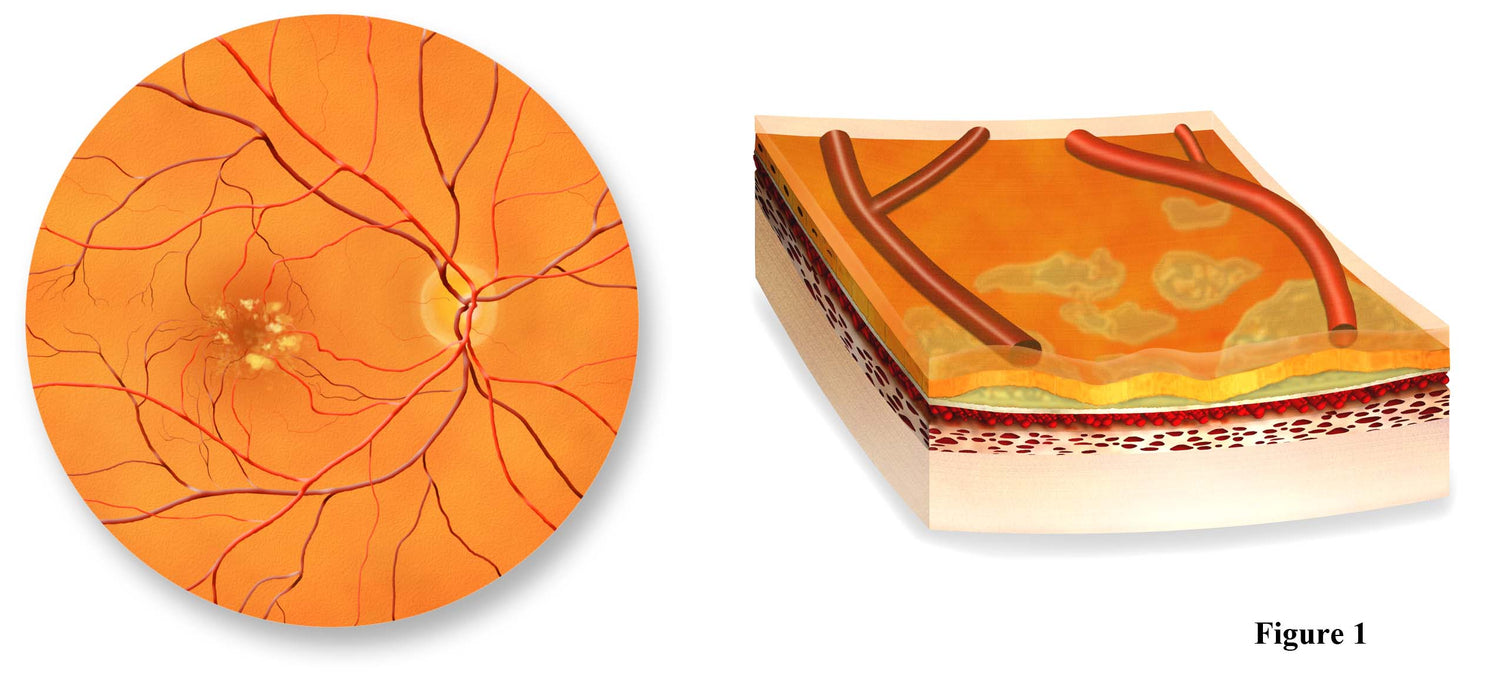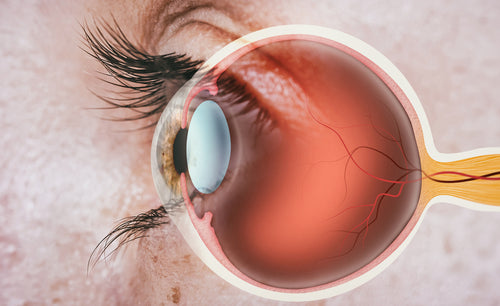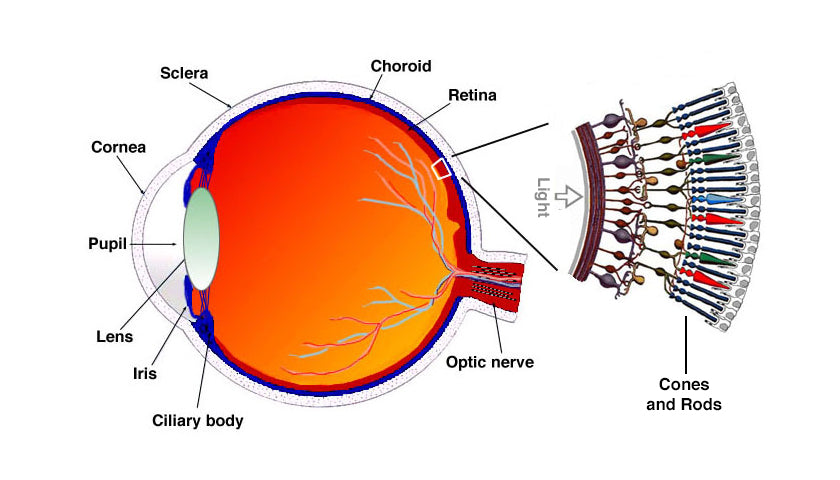Macular degeneration is the world's leading cause of irreversible blindness among elderly people. Detecting early macular degeneration can be difficult, since most studies, including the National Eye Institute's Age Related Disease Studies, have looked primarily at macular degeneration that is of medium severity or worse.
Early macular degeneration, while predominantly an issue of senior eye health, can be seen in younger individuals. Detecting early macular degeneration may disclose the following subtle examination findings:
Drusen - Drusen appear to the examining doctor and on retinal photographs as yellow or off-white deposits scattered throughout the macula, which is the central area of the retina.

When examined under a microscope, drusen represent debris located between the retina and Bruch's Membrane.
Drusen are considered low risk when they are small or made up of a material called "hyaline." These low risk drusen also called, "hard drusen."
Drusen are considered high risk when they are fluffy in appearance without clear borders. These drusen are called "soft drusen." Sometimes, soft drusen are not separated, and are instead connected, or "coalescent."
Pigmentation, or dark deposits, can be associated with drusen, or may be found on the retina without drusen. Pigmentation that is irregular is always considered abnormal in the macula. However, in some cases the pigmentation is difficult to see. Doctors will describe the macula as "mottled," meaning there is some subtle pigmentary change that is not clearly macular degeneration. Therefore, the findings may be so subtle as to make detecting early macular degeneration difficult
Upon diagnosis of early macular degeneration, the only known treatment is supplementation with high dose eye vitamins. No prescriptive pills nor eye injection, as is done with wet macular degeneration,
The National Eye Institute's Age Related Eye Disease 2 Study (AREDS2) proved that macular degeneration could be slowed down using a specific formula of vitamins:
10 mg Lutein
2 mg Zeaxanthin
500 mg of Vitamin C
400 IU of Vitamin E
25-80 mg of Zinc (no difference seen between low and high dose)
Copper (prevents zinc-induced anemia)
Taking an AREDS 2 eye vitamin supports healthy retinal function.














